Moira Butterfield's Blog, page 36
September 23, 2018

Although some people will only know We’re Going on a Bear Hunt as a picture book by Michael Rosen and Helen Oxenbury, the text is adapted from an American folk song and many children of my generation will have known it as a scout and guide campfire song long before the picture book was published.
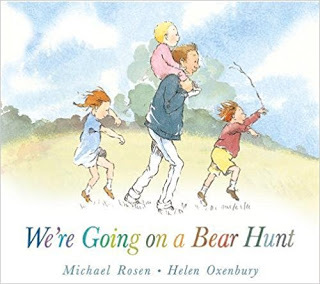
We’re Going on a Bear Hunt is one of the most celebrated examples of a picture book adapted from a song. Song lyrics often need some authorial tinkering to make them work well as a picture book text and the onomatopoeic sounds in the book (Swishy swashy! Splash splosh! etc.) and the verses about the forest and the snowstorm are both Rosen's invention.
My picture book She’ll Be Coming ‘Round the Mountain, illustrated by Deborah Allwright, was also adapted from an American folk song.

When an editor asked me to adapt the song a few years ago, I decided that the first thing I needed to do was reduce the repetition. While a degree of repetition is often encouraged in picture book writing, I felt that having the same phrase repeated five times on every spread would become a little tedious, so I replaced two of the repeated phrases in each verse with a rhyming couplet.
So this first verse of the original folk song:
She'll be coming ‘round the mountain when she comes,TOOT-TOOT!She'll be coming ‘round the mountain when she comes,TOOT-TOOT!She'll be coming ‘round the mountain,She'll be coming ‘round the mountain,She'll be coming ‘round the mountain when she comes,TOOT-TOOT!Became this in my picture book version:
She'll be coming round the mountain when she comes,TOOT-TOOT!She'll be coming round the mountain when she comes,TOOT-TOOT!I also replaced most of the folk song's later verses – including the ones about sleeping with grandma and killing the old red rooster – with new verses. The new verse where the cowgirl paints the whole town purple was a cowboy-hat-tip to the Clint Eastwood western High Plains Drifter, in which an enigmatic cowboy literally paints a whole town red.
Yes, she'll whistle like a train,
As she speeds across the plain,
She'll be coming round the mountain when she comes,TOOT-TOOT!
 One of Deborah Allright's spreads from She’ll Be Coming ‘Round the Mountain (now out of print).
One of Deborah Allright's spreads from She’ll Be Coming ‘Round the Mountain (now out of print).Song often make it onto the page without any authorial tinkering. There are plenty of picture book adaptations of Over in the Meadow and Old MacDonald had a Farm that feature the original lyrics …

… but there are also quite a few adaptations that have been re-written to include a more exotic, mechanical or flatulent cast of characters.

While all of the above examples are adapted from folk songs, picture book adaptations of contemporary songs have become increasingly common in recent years. One of the first examples I remember seeing is this 2007 adaptation of the Peter Paul and Mary song Puff the Magic Dragon illustrated by Eric Puybaret.
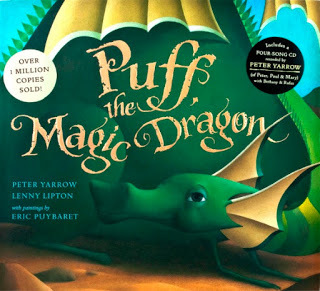
Since then, contemporary songs by Bob Marley, Dolly Parton, John Lennon, Kenny Loggins and many others have been adapted into picture books.

Illustrator Tim Hopgood has produced a series of picture book adaptations of classic 20th Century songs.

As picture books adapted from songs have become increasingly popular, the interval between the song coming out and the picture book being published seems to be reducing. Last year’s picture book adaptation of When I Grow Up, illustrated by Steve Anthony, was published just seven years after the song first appeared, in Tim Minchin’s Matilda the Musical.
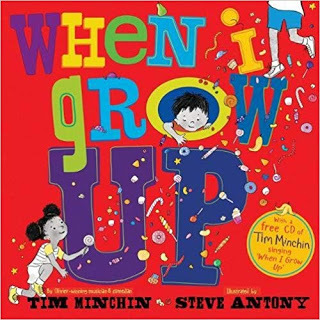
And the picture book version of Pharrell Williams’ Happy! (illustrated with photographs) came out only one year after the song was released!
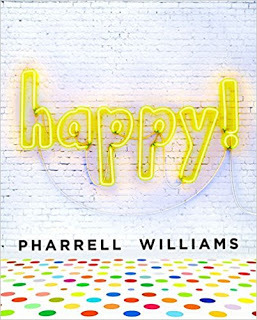
So if you’re a picture book author or illustrator looking for ideas, you might try flicking through an old songbook or switching on the radio. If you’re lucky, you might discover the inspiration for the next We’re Going on a Bear Hunt!
In the meantime, if you know of any good picture book adaptations of songs, do tell us about them in the comments section below.
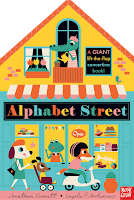 Jonathan Emmett's latest book is Alphabet Street, a spectacular lift-the-flap alphabet book illustrated by Ingela P Arrhenius and published by Nosy Crow. Although it's NOT adapted from the Prince song of the same name, it is written in rhyme and has all the makings of a toe-tapping global smash hit if anyone is interested in buying the song rights.
Jonathan Emmett's latest book is Alphabet Street, a spectacular lift-the-flap alphabet book illustrated by Ingela P Arrhenius and published by Nosy Crow. Although it's NOT adapted from the Prince song of the same name, it is written in rhyme and has all the makings of a toe-tapping global smash hit if anyone is interested in buying the song rights.Find out more about Jonathan and his books at his Scribble Street web site or his blog. You can also follow Jonathan on Facebook and Twitter @scribblestreet.
See all of Jonathan's posts for Picture Book Den.
Published on September 23, 2018 22:30

Although some people will only know We’re Going on a Bear Hunt as a picture book by Michael Rosen and Helen Oxenbury, the text is adapted from an American folk song and many children of my generation will have known it as a scout and guide campfire song long before the picture book was published.

We’re Going on a Bear Hunt is one of the most celebrated examples of a picture book adapted from a song. Song lyrics often need some authorial tinkering to make them work well as a picture book text and the onomatopoeic sounds in the book (Swishy swashy! Splash splosh! etc.) and the verses about the forest and the snowstorm are both Rosen's invention.
My picture book She’ll Be Coming ‘Round the Mountain, illustrated by Deborah Allwright, was also adapted from an American folk song.

When an editor asked me to adapt the song a few years ago, I decided that the first thing I needed to do was reduce the repetition. While a degree of repetition is often encouraged in picture book writing, I felt that having the same phrase repeated five times on every spread would become a little tedious, so I replaced two of the repeated phrases in each verse with a rhyming couplet.
So this first verse of the original folk song:
She'll be coming ‘round the mountain when she comes,TOOT-TOOT!She'll be coming ‘round the mountain when she comes,TOOT-TOOT!She'll be coming ‘round the mountain,She'll be coming ‘round the mountain,She'll be coming ‘round the mountain when she comes,TOOT-TOOT!Became this in my picture book version:
She'll be coming round the mountain when she comes,TOOT-TOOT!She'll be coming round the mountain when she comes,TOOT-TOOT!I also replaced most of the folk song's later verses – including the ones about sleeping with grandma and killing the old red rooster – with new verses. The new verse where the cowgirl paints the whole town purple was a cowboy-hat-tip to the Clint Eastwood western High Plains Drifter, in which an enigmatic cowboy literally paints a whole town red.
Yes, she'll whistle like a train,
As she speeds across the plain,
She'll be coming round the mountain when she comes,TOOT-TOOT!
 One of Deborah Allright's spreads from She’ll Be Coming ‘Round the Mountain (now out of print).
One of Deborah Allright's spreads from She’ll Be Coming ‘Round the Mountain (now out of print).Song often make it onto the page without any authorial tinkering. There are plenty of picture book adaptations of Over in the Meadow and Old MacDonald had a Farm that feature the original lyrics …

… but there are also quite a few adaptations that have been re-written to include a more exotic, mechanical or flatulent cast of characters.

While all of the above examples are adapted from folk songs, picture book adaptations of contemporary songs have become increasingly common in recent years. One of the first examples I remember seeing is this 2007 adaptation of the Peter Paul and Mary song Puff the Magic Dragon illustrated by Eric Puybaret.

Since then, contemporary songs by Bob Marley, Dolly Parton, John Lennon, Kenny Loggins and many others have been adapted into picture books.

Illustrator Tim Hopgood has produced a series of picture book adaptations of classic 20th Century songs.

As picture books adapted from songs have become increasingly popular, the interval between the song coming out and the picture book being published seems to be reducing. Last year’s picture book adaptation of When I Grow Up, illustrated by Steve Anthony, was published just seven years after the song first appeared, in Tim Minchin’s Matilda the Musical.

And the picture book version of Pharrell Williams’ Happy! (illustrated with photographs) came out only one year after the song was released!

So if you’re a picture book author or illustrator looking for ideas, you might try flicking through an old songbook or switching on the radio. If you’re lucky, you might discover the inspiration for the next We’re Going on a Bear Hunt!
In the meantime, if you know of any good picture book adaptations of songs, do tell us about them in the comments section below.
 Jonathan Emmett's latest book is Alphabet Street, a spectacular lift-the-flap alphabet book illustrated by Ingela P Arrhenius and published by Nosy Crow. Although it's NOT adapted from the Prince song of the same name, it is written in rhyme and has all the makings of a toe-tapping global smash hit if anyone is interested in buying the song rights.
Jonathan Emmett's latest book is Alphabet Street, a spectacular lift-the-flap alphabet book illustrated by Ingela P Arrhenius and published by Nosy Crow. Although it's NOT adapted from the Prince song of the same name, it is written in rhyme and has all the makings of a toe-tapping global smash hit if anyone is interested in buying the song rights.Find out more about Jonathan and his books at his Scribble Street web site or his blog. You can also follow Jonathan on Facebook and Twitter @scribblestreet.
See all of Jonathan's posts for Picture Book Den.
Published on September 23, 2018 22:30

Although some people will only know We’re Going on a Bear Hunt as a picture book by Michael Rosen and Helen Oxenbury, the text is adapted from an American folk song and many children of my generation will have known it as a scout and guide campfire song long before the picture book was published.

We’re Going on a Bear Hunt is one of the most celebrated examples of a picture book adapted from a song. Song lyrics often need some authorial tinkering to make them work well as a picture book text and the onomatopoeic sounds in the book (Swishy swashy! Splash splosh! etc.) and the verses about the forest and the snowstorm are both Rosen's invention.
My picture book She’ll Be Coming ‘Round the Mountain, illustrated by Deborah Allwright, was also adapted from an American folk song.

When an editor asked me to adapt the song a few years ago, I decided that the first thing I needed to do was reduce the repetition. While a degree of repetition is often encouraged in picture book writing, I felt that having the same phrase repeated five times on every spread would become a little tedious, so I replaced two of the repeated phrases in each verse with a rhyming couplet.
So this first verse of the original folk song:
She'll be coming ‘round the mountain when she comes,TOOT-TOOT!She'll be coming ‘round the mountain when she comes,TOOT-TOOT!She'll be coming ‘round the mountain,She'll be coming ‘round the mountain,She'll be coming ‘round the mountain when she comes,TOOT-TOOT!Became this in my picture book version:
She'll be coming round the mountain when she comes,TOOT-TOOT!She'll be coming round the mountain when she comes,TOOT-TOOT!I also replaced most of the folk song's later verses – including the ones about sleeping with grandma and killing the old red rooster – with new verses. The new verse where the cowgirl paints the whole town purple was a cowboy-hat-tip to the Clint Eastwood western High Plains Drifter, in which an enigmatic cowboy literally paints a whole town red.
Yes, she'll whistle like a train,
As she speeds across the plain,
She'll be coming round the mountain when she comes,TOOT-TOOT!
 One of Deborah Allright's spreads from She’ll Be Coming ‘Round the Mountain (now out of print).
One of Deborah Allright's spreads from She’ll Be Coming ‘Round the Mountain (now out of print).Song often make it onto the page without any authorial tinkering. There are plenty of picture book adaptations of Over in the Meadow and Old MacDonald had a Farm that feature the original lyrics …

… but there are also quite a few adaptations that have been re-written to include a more exotic, mechanical or flatulent cast of characters.

While all of the above examples are adapted from folk songs, picture book adaptations of contemporary songs have become increasingly common in recent years. One of the first examples I remember seeing is this 2007 adaptation of the Peter Paul and Mary song Puff the Magic Dragon illustrated by Eric Puybaret.

Since then, contemporary songs by Bob Marley, Dolly Parton, John Lennon, Kenny Loggins and many others have been adapted into picture books.

Illustrator Tim Hopgood has produced a series of picture book adaptations of classic 20th Century songs.

As picture books adapted from songs have become increasingly popular, the interval between the song coming out and the picture book being published seems to be reducing. Last year’s picture book adaptation of When I Grow Up, illustrated by Steve Anthony, was published just seven years after the song first appeared, in Tim Minchin’s Matilda the Musical.

And the picture book version of Pharrell Williams’ Happy! (illustrated with photographs) came out only one year after the song was released!

So if you’re a picture book author or illustrator looking for ideas, you might try flicking through an old songbook or switching on the radio. If you’re lucky, you might discover the inspiration for the next We’re Going on a Bear Hunt!
In the meantime, if you know of any good picture book adaptations of songs, do tell us about them in the comments section below.
 Jonathan Emmett's latest book is Alphabet Street, a spectacular lift-the-flap alphabet book illustrated by Ingela P Arrhenius and published by Nosy Crow. Although it's NOT adapted from the Prince song of the same name, it is written in rhyme and has all the makings of a toe-tapping global smash hit if anyone is interested in buying the song rights.
Jonathan Emmett's latest book is Alphabet Street, a spectacular lift-the-flap alphabet book illustrated by Ingela P Arrhenius and published by Nosy Crow. Although it's NOT adapted from the Prince song of the same name, it is written in rhyme and has all the makings of a toe-tapping global smash hit if anyone is interested in buying the song rights.Find out more about Jonathan and his books at his Scribble Street web site or his blog. You can also follow Jonathan on Facebook and Twitter @scribblestreet.
See all of Jonathan's posts for Picture Book Den.
Published on September 23, 2018 22:30

Although some people will only know We’re Going on a Bear Hunt as a picture book by Michael Rosen and Helen Oxenbury, the text is adapted from an American folk song and many children of my generation will have known it as a scout and guide campfire song long before the picture book was published.

We’re Going on a Bear Hunt is one of the most celebrated examples of a picture book adapted from a song. Song lyrics often need some authorial tinkering to make them work well as a picture book text and the onomatopoeic sounds in the book (Swishy swashy! Splash splosh! etc.) and the verses about the forest and the snowstorm are both Rosen's invention.
My picture book She’ll Be Coming ‘Round the Mountain, illustrated by Deborah Allwright, was also adapted from an American folk song.

When an editor asked me to adapt the song a few years ago, I decided that the first thing I needed to do was reduce the repetition. While a degree of repetition is often encouraged in picture book writing, I felt that having the same phrase repeated five times on every spread would become a little tedious, so I replaced two of the repeated phrases in each verse with a rhyming couplet.
So this first verse of the original folk song:
She'll be coming ‘round the mountain when she comes,TOOT-TOOT!She'll be coming ‘round the mountain when she comes,TOOT-TOOT!She'll be coming ‘round the mountain,She'll be coming ‘round the mountain,She'll be coming ‘round the mountain when she comes,TOOT-TOOT!Became this in my picture book version:
She'll be coming round the mountain when she comes,TOOT-TOOT!She'll be coming round the mountain when she comes,TOOT-TOOT!I also replaced most of the folk song's later verses – including the ones about sleeping with grandma and killing the old red rooster – with new verses. The new verse where the cowgirl paints the whole town purple was a cowboy-hat-tip to the Clint Eastwood western High Plains Drifter, in which an enigmatic cowboy literally paints a whole town red.
Yes, she'll whistle like a train,
As she speeds across the plain,
She'll be coming round the mountain when she comes,TOOT-TOOT!
 One of Deborah Allright's spreads from She’ll Be Coming ‘Round the Mountain (now out of print).
One of Deborah Allright's spreads from She’ll Be Coming ‘Round the Mountain (now out of print).Song often make it onto the page without any authorial tinkering. There are plenty of picture book adaptations of Over in the Meadow and Old MacDonald had a Farm that feature the original lyrics …

… but there are also quite a few adaptations that have been re-written to include a more exotic, mechanical or flatulent cast of characters.

While all of the above examples are adapted from folk songs, picture book adaptations of contemporary songs have become increasingly common in recent years. One of the first examples I remember seeing is this 2007 adaptation of the Peter Paul and Mary song Puff the Magic Dragon illustrated by Eric Puybaret.

Since then, contemporary songs by Bob Marley, Dolly Parton, John Lennon, Kenny Loggins and many others have been adapted into picture books.

Illustrator Tim Hopgood has produced a series of picture book adaptations of classic 20th Century songs.

As picture books adapted from songs have become increasingly popular, the interval between the song coming out and the picture book being published seems to be reducing. Last year’s picture book adaptation of When I Grow Up, illustrated by Steve Anthony, was published just seven years after the song first appeared, in Tim Minchin’s Matilda the Musical.

And the picture book version of Pharrell Williams’ Happy! (illustrated with photographs) came out only one year after the song was released!

So if you’re a picture book author or illustrator looking for ideas, you might try flicking through an old songbook or switching on the radio. If you’re lucky, you might discover the inspiration for the next We’re Going on a Bear Hunt!
In the meantime, if you know of any good picture book adaptations of songs, do tell us about them in the comments section below.
 Jonathan Emmett's latest book is Alphabet Street, a spectacular lift-the-flap alphabet book illustrated by Ingela P Arrhenius and published by Nosy Crow. Although it's NOT adapted from the Prince song of the same name, it is written in rhyme and has all the makings of a toe-tapping global smash hit if anyone is interested in buying the song rights.
Jonathan Emmett's latest book is Alphabet Street, a spectacular lift-the-flap alphabet book illustrated by Ingela P Arrhenius and published by Nosy Crow. Although it's NOT adapted from the Prince song of the same name, it is written in rhyme and has all the makings of a toe-tapping global smash hit if anyone is interested in buying the song rights.Find out more about Jonathan and his books at his Scribble Street web site or his blog. You can also follow Jonathan on Facebook and Twitter @scribblestreet.
See all of Jonathan's posts for Picture Book Den.
Published on September 23, 2018 22:30

Although some people will only know We’re Going on a Bear Hunt as a picture book by Michael Rosen and Helen Oxenbury, the text is adapted from an American folk song and many children of my generation will have known it as a scout and guide campfire song long before the picture book was published.

We’re Going on a Bear Hunt is one of the most celebrated examples of a picture book adapted from a song. Song lyrics often need some authorial tinkering to make them work well as a picture book text and the onomatopoeic sounds in the book (Swishy swashy! Splash splosh! etc.) and the verses about the forest and the snowstorm are both Rosen's invention.
My picture book She’ll Be Coming ‘Round the Mountain, illustrated by Deborah Allwright, was also adapted from an American folk song.

When an editor asked me to adapt the song a few years ago, I decided that the first thing I needed to do was reduce the repetition. While a degree of repetition is often encouraged in picture book writing, I felt that having the same phrase repeated five times on every spread would become a little tedious, so I replaced two of the repeated phrases in each verse with a rhyming couplet.
So this first verse of the original folk song:
She'll be coming ‘round the mountain when she comes,TOOT-TOOT!She'll be coming ‘round the mountain when she comes,TOOT-TOOT!She'll be coming ‘round the mountain,She'll be coming ‘round the mountain,She'll be coming ‘round the mountain when she comes,TOOT-TOOT!Became this in my picture book version:
She'll be coming round the mountain when she comes,TOOT-TOOT!She'll be coming round the mountain when she comes,TOOT-TOOT!I also replaced most of the folk song's later verses – including the ones about sleeping with grandma and killing the old red rooster – with new verses. The new verse where the cowgirl paints the whole town purple was a cowboy-hat-tip to the Clint Eastwood western High Plains Drifter, in which an enigmatic cowboy literally paints a whole town red.
Yes, she'll whistle like a train,
As she speeds across the plain,
She'll be coming round the mountain when she comes,TOOT-TOOT!
 One of Deborah Allright's spreads from She’ll Be Coming ‘Round the Mountain (now out of print).
One of Deborah Allright's spreads from She’ll Be Coming ‘Round the Mountain (now out of print).Song often make it onto the page without any authorial tinkering. There are plenty of picture book adaptations of Over in the Meadow and Old MacDonald had a Farm that feature the original lyrics …

… but there are also quite a few adaptations that have been re-written to include a more exotic, mechanical or flatulent cast of characters.

While all of the above examples are adapted from folk songs, picture book adaptations of contemporary songs have become increasingly common in recent years. One of the first examples I remember seeing is this 2007 adaptation of the Peter Paul and Mary song Puff the Magic Dragon illustrated by Eric Puybaret.

Since then, contemporary songs by Bob Marley, Dolly Parton, John Lennon, Kenny Loggins and many others have been adapted into picture books.

Illustrator Tim Hopgood has produced a series of picture book adaptations of classic 20th Century songs.

As picture books adapted from songs have become increasingly popular, the interval between the song coming out and the picture book being published seems to be reducing. Last year’s picture book adaptation of When I Grow Up, illustrated by Steve Anthony, was published just seven years after the song first appeared, in Tim Minchin’s Matilda the Musical.

And the picture book version of Pharrell Williams’ Happy! (illustrated with photographs) came out only one year after the song was released!

So if you’re a picture book author or illustrator looking for ideas, you might try flicking through an old songbook or switching on the radio. If you’re lucky, you might discover the inspiration for the next We’re Going on a Bear Hunt!
In the meantime, if you know of any good picture book adaptations of songs, do tell us about them in the comments section below.
 Jonathan Emmett's latest book is Alphabet Street, a spectacular lift-the-flap alphabet book illustrated by Ingela P Arrhenius and published by Nosy Crow. Although it's NOT adapted from the Prince song of the same name, it is written in rhyme and has all the makings of a toe-tapping global smash hit if anyone is interested in buying the song rights.
Jonathan Emmett's latest book is Alphabet Street, a spectacular lift-the-flap alphabet book illustrated by Ingela P Arrhenius and published by Nosy Crow. Although it's NOT adapted from the Prince song of the same name, it is written in rhyme and has all the makings of a toe-tapping global smash hit if anyone is interested in buying the song rights.Find out more about Jonathan and his books at his Scribble Street web site or his blog. You can also follow Jonathan on Facebook and Twitter @scribblestreet.
See all of Jonathan's posts for Picture Book Den.
Published on September 23, 2018 22:30

Although some people will only know We’re Going on a Bear Hunt as a picture book by Michael Rosen and Helen Oxenbury, the text is adapted from an American folk song and many children of my generation will have known it as a scout and guide campfire song long before the picture book was published.

We’re Going on a Bear Hunt is one of the most celebrated examples of a picture book adapted from a song. Song lyrics often need some authorial tinkering to make them work well as a picture book text and the onomatopoeic sounds in the book (Swishy swashy! Splash splosh! etc.) and the verses about the forest and the snowstorm are both Rosen's invention.
My picture book She’ll Be Coming ‘Round the Mountain, illustrated by Deborah Allwright, was also adapted from an American folk song.

When an editor asked me to adapt the song a few years ago, I decided that the first thing I needed to do was reduce the repetition. While a degree of repetition is often encouraged in picture book writing, I felt that having the same phrase repeated five times on every spread would become a little tedious, so I replaced two of the repeated phrases in each verse with a rhyming couplet.
So this first verse of the original folk song:
She'll be coming ‘round the mountain when she comes,TOOT-TOOT!She'll be coming ‘round the mountain when she comes,TOOT-TOOT!She'll be coming ‘round the mountain,She'll be coming ‘round the mountain,She'll be coming ‘round the mountain when she comes,TOOT-TOOT!Became this in my picture book version:
She'll be coming round the mountain when she comes,TOOT-TOOT!She'll be coming round the mountain when she comes,TOOT-TOOT!I also replaced most of the folk song's later verses – including the ones about sleeping with grandma and killing the old red rooster – with new verses. The new verse where the cowgirl paints the whole town purple was a cowboy-hat-tip to the Clint Eastwood western High Plains Drifter, in which an enigmatic cowboy literally paints a whole town red.
Yes, she'll whistle like a train,
As she speeds across the plain,
She'll be coming round the mountain when she comes,TOOT-TOOT!
 One of Deborah Allright's spreads from She’ll Be Coming ‘Round the Mountain (now out of print).
One of Deborah Allright's spreads from She’ll Be Coming ‘Round the Mountain (now out of print).Song often make it onto the page without any authorial tinkering. There are plenty of picture book adaptations of Over in the Meadow and Old MacDonald had a Farm that feature the original lyrics …

… but there are also quite a few adaptations that have been re-written to include a more exotic, mechanical or flatulent cast of characters.

While all of the above examples are adapted from folk songs, picture book adaptations of contemporary songs have become increasingly common in recent years. One of the first examples I remember seeing is this 2007 adaptation of the Peter Paul and Mary song Puff the Magic Dragon illustrated by Eric Puybaret.

Since then, contemporary songs by Bob Marley, Dolly Parton, John Lennon, Kenny Loggins and many others have been adapted into picture books.

Illustrator Tim Hopgood has produced a series of picture book adaptations of classic 20th Century songs.

As picture books adapted from songs have become increasingly popular, the interval between the song coming out and the picture book being published seems to be reducing. Last year’s picture book adaptation of When I Grow Up, illustrated by Steve Anthony, was published just seven years after the song first appeared, in Tim Minchin’s Matilda the Musical.

And the picture book version of Pharrell Williams’ Happy! (illustrated with photographs) came out only one year after the song was released!

So if you’re a picture book author or illustrator looking for ideas, you might try flicking through an old songbook or switching on the radio. If you’re lucky, you might discover the inspiration for the next We’re Going on a Bear Hunt!
In the meantime, if you know of any good picture book adaptations of songs, do tell us about them in the comments section below.
 Jonathan Emmett's latest book is Alphabet Street, a spectacular lift-the-flap alphabet book illustrated by Ingela P Arrhenius and published by Nosy Crow. Although it's NOT adapted from the Prince song of the same name, it is written in rhyme and has all the makings of a toe-tapping global smash hit if anyone is interested in buying the song rights.
Jonathan Emmett's latest book is Alphabet Street, a spectacular lift-the-flap alphabet book illustrated by Ingela P Arrhenius and published by Nosy Crow. Although it's NOT adapted from the Prince song of the same name, it is written in rhyme and has all the makings of a toe-tapping global smash hit if anyone is interested in buying the song rights.Find out more about Jonathan and his books at his Scribble Street web site or his blog. You can also follow Jonathan on Facebook and Twitter @scribblestreet.
See all of Jonathan's posts for Picture Book Den.
Published on September 23, 2018 22:30

Although some people will only know We’re Going on a Bear Hunt as a picture book by Michael Rosen and Helen Oxenbury, the text is adapted from an American folk song and many children of my generation will have known it as a scout and guide campfire song long before the picture book was published.

We’re Going on a Bear Hunt is one of the most celebrated examples of a picture book adapted from a song. Song lyrics often need some authorial tinkering to make them work well as a picture book text and the onomatopoeic sounds in the book (Swishy swashy! Splash splosh! etc.) and the verses about the forest and the snowstorm are both Rosen's invention.
My picture book She’ll Be Coming ‘Round the Mountain, illustrated by Deborah Allwright, was also adapted from an American folk song.

When an editor asked me to adapt the song a few years ago, I decided that the first thing I needed to do was reduce the repetition. While a degree of repetition is often encouraged in picture book writing, I felt that having the same phrase repeated five times on every spread would become a little tedious, so I replaced two of the repeated phrases in each verse with a rhyming couplet.
So this first verse of the original folk song:
She'll be coming ‘round the mountain when she comes,TOOT-TOOT!She'll be coming ‘round the mountain when she comes,TOOT-TOOT!She'll be coming ‘round the mountain,She'll be coming ‘round the mountain,She'll be coming ‘round the mountain when she comes,TOOT-TOOT!Became this in my picture book version:
She'll be coming round the mountain when she comes,TOOT-TOOT!She'll be coming round the mountain when she comes,TOOT-TOOT!I also replaced most of the folk song's later verses – including the ones about sleeping with grandma and killing the old red rooster – with new verses. The new verse where the cowgirl paints the whole town purple was a cowboy-hat-tip to the Clint Eastwood western High Plains Drifter, in which an enigmatic cowboy literally paints a whole town red.
Yes, she'll whistle like a train,
As she speeds across the plain,
She'll be coming round the mountain when she comes,TOOT-TOOT!
 One of Deborah Allright's spreads from She’ll Be Coming ‘Round the Mountain (now out of print).
One of Deborah Allright's spreads from She’ll Be Coming ‘Round the Mountain (now out of print).Song often make it onto the page without any authorial tinkering. There are plenty of picture book adaptations of Over in the Meadow and Old MacDonald had a Farm that feature the original lyrics …

… but there are also quite a few adaptations that have been re-written to include a more exotic, mechanical or flatulent cast of characters.

While all of the above examples are adapted from folk songs, picture book adaptations of contemporary songs have become increasingly common in recent years. One of the first examples I remember seeing is this 2007 adaptation of the Peter Paul and Mary song Puff the Magic Dragon illustrated by Eric Puybaret.

Since then, contemporary songs by Bob Marley, Dolly Parton, John Lennon, Kenny Loggins and many others have been adapted into picture books.

Illustrator Tim Hopgood has produced a series of picture book adaptations of classic 20th Century songs.

As picture books adapted from songs have become increasingly popular, the interval between the song coming out and the picture book being published seems to be reducing. Last year’s picture book adaptation of When I Grow Up, illustrated by Steve Anthony, was published just seven years after the song first appeared, in Tim Minchin’s Matilda the Musical.

And the picture book version of Pharrell Williams’ Happy! (illustrated with photographs) came out only one year after the song was released!

So if you’re a picture book author or illustrator looking for ideas, you might try flicking through an old songbook or switching on the radio. If you’re lucky, you might discover the inspiration for the next We’re Going on a Bear Hunt!
In the meantime, if you know of any good picture book adaptations of songs, do tell us about them in the comments section below.
 Jonathan Emmett's latest book is Alphabet Street, a spectacular lift-the-flap alphabet book illustrated by Ingela P Arrhenius and published by Nosy Crow. Although it's NOT adapted from the Prince song of the same name, it is written in rhyme and has all the makings of a toe-tapping global smash hit if anyone is interested in buying the song rights.
Jonathan Emmett's latest book is Alphabet Street, a spectacular lift-the-flap alphabet book illustrated by Ingela P Arrhenius and published by Nosy Crow. Although it's NOT adapted from the Prince song of the same name, it is written in rhyme and has all the makings of a toe-tapping global smash hit if anyone is interested in buying the song rights.Find out more about Jonathan and his books at his Scribble Street web site or his blog. You can also follow Jonathan on Facebook and Twitter @scribblestreet.
See all of Jonathan's posts for Picture Book Den.
Published on September 23, 2018 22:30

Although some people will only know We’re Going on a Bear Hunt as a picture book by Michael Rosen and Helen Oxenbury, the text is adapted from an American folk song and many children of my generation will have known it as a scout and guide campfire song long before the picture book was published.

We’re Going on a Bear Hunt is one of the most celebrated examples of a picture book adapted from a song. Song lyrics often need some authorial tinkering to make them work well as a picture book text and the onomatopoeic sounds in the book (Swishy swashy! Splash splosh! etc.) and the verses about the forest and the snowstorm are both Rosen's invention.
My picture book She’ll Be Coming ‘Round the Mountain, illustrated by Deborah Allwright, was also adapted from an American folk song.

When an editor asked me to adapt the song a few years ago, I decided that the first thing I needed to do was reduce the repetition. While a degree of repetition is often encouraged in picture book writing, I felt that having the same phrase repeated five times on every spread would become a little tedious, so I replaced two of the repeated phrases in each verse with a rhyming couplet.
So this first verse of the original folk song:
She'll be coming ‘round the mountain when she comes,TOOT-TOOT!She'll be coming ‘round the mountain when she comes,TOOT-TOOT!She'll be coming ‘round the mountain,She'll be coming ‘round the mountain,She'll be coming ‘round the mountain when she comes,TOOT-TOOT!Became this in my picture book version:
She'll be coming round the mountain when she comes,TOOT-TOOT!She'll be coming round the mountain when she comes,TOOT-TOOT!I also replaced most of the folk song's later verses – including the ones about sleeping with grandma and killing the old red rooster – with new verses. The new verse where the cowgirl paints the whole town purple was a cowboy-hat-tip to the Clint Eastwood western High Plains Drifter, in which an enigmatic cowboy literally paints a whole town red.
Yes, she'll whistle like a train,
As she speeds across the plain,
She'll be coming round the mountain when she comes,TOOT-TOOT!
 One of Deborah Allright's spreads from She’ll Be Coming ‘Round the Mountain (now out of print).
One of Deborah Allright's spreads from She’ll Be Coming ‘Round the Mountain (now out of print).Song often make it onto the page without any authorial tinkering. There are plenty of picture book adaptations of Over in the Meadow and Old MacDonald had a Farm that feature the original lyrics …

… but there are also quite a few adaptations that have been re-written to include a more exotic, mechanical or flatulent cast of characters.

While all of the above examples are adapted from folk songs, picture book adaptations of contemporary songs have become increasingly common in recent years. One of the first examples I remember seeing is this 2007 adaptation of the Peter Paul and Mary song Puff the Magic Dragon illustrated by Eric Puybaret.

Since then, contemporary songs by Bob Marley, Dolly Parton, John Lennon, Kenny Loggins and many others have been adapted into picture books.

Illustrator Tim Hopgood has produced a series of picture book adaptations of classic 20th Century songs.

As picture books adapted from songs have become increasingly popular, the interval between the song coming out and the picture book being published seems to be reducing. Last year’s picture book adaptation of When I Grow Up, illustrated by Steve Anthony, was published just seven years after the song first appeared, in Tim Minchin’s Matilda the Musical.

And the picture book version of Pharrell Williams’ Happy! (illustrated with photographs) came out only one year after the song was released!

So if you’re a picture book author or illustrator looking for ideas, you might try flicking through an old songbook or switching on the radio. If you’re lucky, you might discover the inspiration for the next We’re Going on a Bear Hunt!
In the meantime, if you know of any good picture book adaptations of songs, do tell us about them in the comments section below.
 Jonathan Emmett's latest book is Alphabet Street, a spectacular lift-the-flap alphabet book illustrated by Ingela P Arrhenius and published by Nosy Crow. Although it's NOT adapted from the Prince song of the same name, it is written in rhyme and has all the makings of a toe-tapping global smash hit if anyone is interested in buying the song rights.
Jonathan Emmett's latest book is Alphabet Street, a spectacular lift-the-flap alphabet book illustrated by Ingela P Arrhenius and published by Nosy Crow. Although it's NOT adapted from the Prince song of the same name, it is written in rhyme and has all the makings of a toe-tapping global smash hit if anyone is interested in buying the song rights.Find out more about Jonathan and his books at his Scribble Street web site or his blog. You can also follow Jonathan on Facebook and Twitter @scribblestreet.
See all of Jonathan's posts for Picture Book Den.
Published on September 23, 2018 22:30
September 16, 2018
From redundancy to award-winning picture book • Guest blog post by Kate Milner
Huge congratulations to author illustrator, Kate Milner, who last week won the prestigious 2018 Klaus Flugge Prize for the most exciting and promising newcomer to children's book illustration.
In her guest blog post, Kate takes us behind the scenes of her award-winning My Name is Not Refugee. We see illustrations that didn't make it into the final picture book, and discover why they were left out.
When my job was replaced by a machine at our local library I decide to take the chance to do an MA in children’s illustration at Anglia Ruskin. I had wanted to do the course for many years but it felt like a huge risk to step out of the labour market when I had commitments. There was so much excitement and so much fear wrapped up in returning to education in middle age.
I had done some work in editorial illustration when I was younger and I have always drawn and written stories for adults but it was working in the local library which showed me all the possibilities in children’s publishing. I also, of course, met a lot of readers. It was an excellent education.
I came up with the idea for My Name Is Not Refugee at the very end of the course when I should have been finishing off a piece of work for presentation. It was born out of anger at the debate in the press about the march of refugees out of Syria. They were being described as a zombie army, shuffling towards us, and it felt important to me to explain to children why these families had no choice but to leave their homes. It was crazy to start work on this idea a few days before the end of the course but that is what I did, presenting at the final crit a scrappy, half-finished picture book, with no cover. We all agreed it had no chance of commercial success.
All the steps which have taken me from that crit to winning the Klaus Flugge Prize feel as if they are nothing to do with me but all the wonderful tutors, fellow students, agents and publishers who have picked it up and run with it. When people congratulate me I always say that I have been very lucky. Being polite they generally then say something like, not luck but talent; but, without any false modesty, I know that it takes collaboration to get a book into the hands of children and I have been very very lucky in my collaborators.
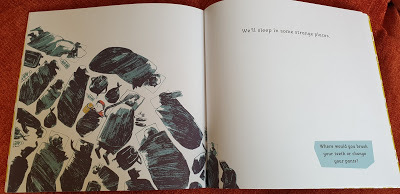 Unlike others below, this is an early illustration
Unlike others below, this is an early illustration
that did make it into the final book.
From My Name in Not Refugee by Kate Milner
Published by The Bucket List (Barrington Stoke), 2017Some of the spreads in the final book have hardly changed since I first drew them. The illustration showing people sleeping on the station platform is an example (see above), it is almost exactly the image I made as soon as I had the idea. Some spreads, on the other hand, have gone through a lot of changes and below are three early illustrations which have not made it into the book.
1) We'll hear words we don't understand.
This was the first example of the idea. I was trying to get the feeling of not understanding anything around you as a child might who finds themselves in a strange country. It’s not just the people who are speaking a strange language, it’s the radio, the dog, the street signs and the magazines, everything is different. Although I still like this image I can see it didn’t fit in with the rest of the book.
 Early illustration idea on language, Kate Milner
Early illustration idea on language, Kate Milner
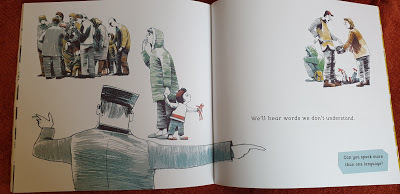 We'll hear words we don't understand, from the final book
We'll hear words we don't understand, from the final book
My Name is Not Refugee, Kate Milner
2) We'll see lots of new and interesting things.
Here is another spread that went through many many changes. The little boy at the centre of the book is basically a cheerful, curious character so, to give a change of mood, I wanted to show him excited about something new. But what should the new thing be?
 Early illustration idea on seeing new and interesting things, Kate Milner
Early illustration idea on seeing new and interesting things, Kate Milner
This was one idea which came from looking at pictures of refugee camps on the internet. I could see temporary shops being set up with items for sale wrapped in plastic bags and hung from washing lines. I found this visually very interesting, the sweeping curves of the washing lines, the distortion of the objects through the plastic; I got a bit carried away. Again I like this image but I can see why it hasn’t made it into the final book. It’s my idea of what is interesting, not a small boy’s.
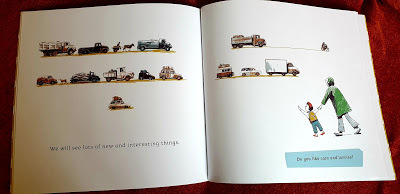 We'll see lots of new and interesting things, from the final book
We'll see lots of new and interesting things, from the final book
My Name is Not Refugee, Kate Milner
3) Sometimes we'll wait by ourselves...
I like this image, probably more than the illustration in the final book which is a return to my original idea. However, I can absolutely see why we decided not to use it.
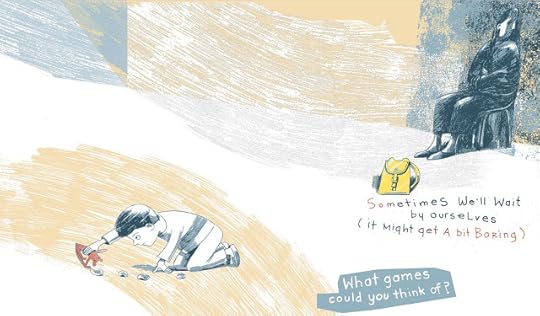 Early illustration idea on waiting, Kate Milner
Early illustration idea on waiting, Kate Milner
The heart of the book is the relationship between the mother and her little boy. On nearly every spread of the final book they are touching, or close to each other, or looking at each other. If she is there he is safe and can look out at the world around him. This illustration does not show that connection between them.
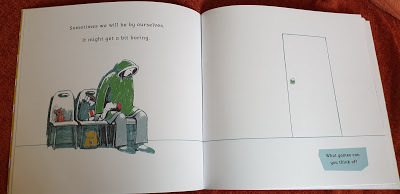 Sometimes we'll wait by ourselves, from the final book
Sometimes we'll wait by ourselves, from the final book
My Name is Not Refugee, Kate Milner
 Kate MilnerThank you, Kate, for this wonderful insight into your new picture book, and for showing us that redundancy can be an exciting catalyst to something new.
Kate MilnerThank you, Kate, for this wonderful insight into your new picture book, and for showing us that redundancy can be an exciting catalyst to something new.
Follow Kate on Twitter @ABagForKatie
My Name is Not Refugee by Kate Milner is published by The Bucket List (Barrington Stoke), 2017
Klaus Flugge Prize 2018 www.klausfluggeprize.co.uk
In her guest blog post, Kate takes us behind the scenes of her award-winning My Name is Not Refugee. We see illustrations that didn't make it into the final picture book, and discover why they were left out.
When my job was replaced by a machine at our local library I decide to take the chance to do an MA in children’s illustration at Anglia Ruskin. I had wanted to do the course for many years but it felt like a huge risk to step out of the labour market when I had commitments. There was so much excitement and so much fear wrapped up in returning to education in middle age.
I had done some work in editorial illustration when I was younger and I have always drawn and written stories for adults but it was working in the local library which showed me all the possibilities in children’s publishing. I also, of course, met a lot of readers. It was an excellent education.
I came up with the idea for My Name Is Not Refugee at the very end of the course when I should have been finishing off a piece of work for presentation. It was born out of anger at the debate in the press about the march of refugees out of Syria. They were being described as a zombie army, shuffling towards us, and it felt important to me to explain to children why these families had no choice but to leave their homes. It was crazy to start work on this idea a few days before the end of the course but that is what I did, presenting at the final crit a scrappy, half-finished picture book, with no cover. We all agreed it had no chance of commercial success.
All the steps which have taken me from that crit to winning the Klaus Flugge Prize feel as if they are nothing to do with me but all the wonderful tutors, fellow students, agents and publishers who have picked it up and run with it. When people congratulate me I always say that I have been very lucky. Being polite they generally then say something like, not luck but talent; but, without any false modesty, I know that it takes collaboration to get a book into the hands of children and I have been very very lucky in my collaborators.
 Unlike others below, this is an early illustration
Unlike others below, this is an early illustration that did make it into the final book.
From My Name in Not Refugee by Kate Milner
Published by The Bucket List (Barrington Stoke), 2017Some of the spreads in the final book have hardly changed since I first drew them. The illustration showing people sleeping on the station platform is an example (see above), it is almost exactly the image I made as soon as I had the idea. Some spreads, on the other hand, have gone through a lot of changes and below are three early illustrations which have not made it into the book.
1) We'll hear words we don't understand.
This was the first example of the idea. I was trying to get the feeling of not understanding anything around you as a child might who finds themselves in a strange country. It’s not just the people who are speaking a strange language, it’s the radio, the dog, the street signs and the magazines, everything is different. Although I still like this image I can see it didn’t fit in with the rest of the book.
 Early illustration idea on language, Kate Milner
Early illustration idea on language, Kate Milner We'll hear words we don't understand, from the final book
We'll hear words we don't understand, from the final book My Name is Not Refugee, Kate Milner
2) We'll see lots of new and interesting things.
Here is another spread that went through many many changes. The little boy at the centre of the book is basically a cheerful, curious character so, to give a change of mood, I wanted to show him excited about something new. But what should the new thing be?
 Early illustration idea on seeing new and interesting things, Kate Milner
Early illustration idea on seeing new and interesting things, Kate MilnerThis was one idea which came from looking at pictures of refugee camps on the internet. I could see temporary shops being set up with items for sale wrapped in plastic bags and hung from washing lines. I found this visually very interesting, the sweeping curves of the washing lines, the distortion of the objects through the plastic; I got a bit carried away. Again I like this image but I can see why it hasn’t made it into the final book. It’s my idea of what is interesting, not a small boy’s.
 We'll see lots of new and interesting things, from the final book
We'll see lots of new and interesting things, from the final book My Name is Not Refugee, Kate Milner
3) Sometimes we'll wait by ourselves...
I like this image, probably more than the illustration in the final book which is a return to my original idea. However, I can absolutely see why we decided not to use it.
 Early illustration idea on waiting, Kate Milner
Early illustration idea on waiting, Kate MilnerThe heart of the book is the relationship between the mother and her little boy. On nearly every spread of the final book they are touching, or close to each other, or looking at each other. If she is there he is safe and can look out at the world around him. This illustration does not show that connection between them.
 Sometimes we'll wait by ourselves, from the final book
Sometimes we'll wait by ourselves, from the final book My Name is Not Refugee, Kate Milner
 Kate MilnerThank you, Kate, for this wonderful insight into your new picture book, and for showing us that redundancy can be an exciting catalyst to something new.
Kate MilnerThank you, Kate, for this wonderful insight into your new picture book, and for showing us that redundancy can be an exciting catalyst to something new.Follow Kate on Twitter @ABagForKatie
My Name is Not Refugee by Kate Milner is published by The Bucket List (Barrington Stoke), 2017
Klaus Flugge Prize 2018 www.klausfluggeprize.co.uk
Published on September 16, 2018 23:00
September 9, 2018
Five Tips for the Creative Process • by Natascha Biebow
This summer, I had the good fortune to attend the SCBWI International Conference in LA, where for three days, I was one of 1180 attendees amongst the star-studded faculty.
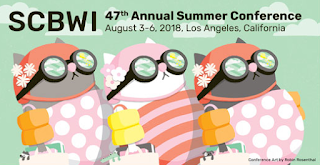
Here are five inspirational thoughts I took away with me :
1. Tell Your Inner Demons to SHUT UP! – this was a recurring theme amongst many of the speakers, who reminded us to stay true to our writing and storytelling and to ignore the nay-sayers, the doubting voices. “Kill the committee—those voices in your head that say can't, won't, and other things that get in the way” Andrea Pinkney urged. TheyDO NOT SERVE YOU.
Ah, now that they are GONE, I can begin the real work . . .
 2. SIMMER: it is important to let your stories simmer, to allow a time, to open your senses, to be still and receptive to QUIET so you can hear the story and keep moving forwards creatively. Andrea Pinkney meditates every morning before she starts work.
2. SIMMER: it is important to let your stories simmer, to allow a time, to open your senses, to be still and receptive to QUIET so you can hear the story and keep moving forwards creatively. Andrea Pinkney meditates every morning before she starts work. Author/Illustrator Eliza Wheeler shared how when it comes to getting the best ideas, the farther and more freely your thoughts can roam, the better. Your mood can really affect how you create. Listen to your emotional state, so if you feel:
Anxiety: you're judging yourself and your work
Boredom: you haven't spent enough time immersing yourself in your ideas
Stress: you're trying to consider too much at once
Fried: you've pushed it too far. Take a break and return to things afresh
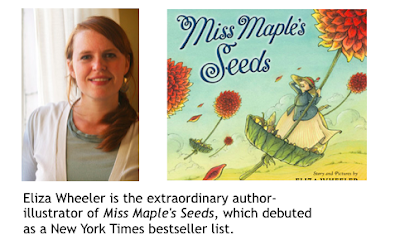
3. ‘DIVE AFRAID’: it’s okay to not know what the ending is, where you are going, what shape your story will take on. When you are writing or crafting a story, the reader must also dive afraid – the author is making a covenant and inviting them on a journey. Make that human connection with your reader. TRUST.
4. HOOK, PULL, HOLD: Andrea Pinkney shared her creative process – really useful to keep pinned to your noticeboard as a reminder when you're working: first, hook in readers quickly with VOICE and a clear premise (“Reader, we’re going on a journey – let me tell you where we’re going and why you should come along”). Add texture and flavour, that ‘twinkle’ that is unique to you. Then pull readers along with emotion and a gripping turnkey that will hold their attention until the curtain comes down.
5. A STORY IS LIKE A RIPPLE IN THE WORLD: You never know how a scene in your book might influence and connect with a reader. Keynote Bruce Coville said: “The right story at the right moment is like an arrow to the heart; it can catch and hold a hurt and bring it to the surface.” The story that you tell now might send a ripple through the world, a scene from a book could influence the adult that child might become.
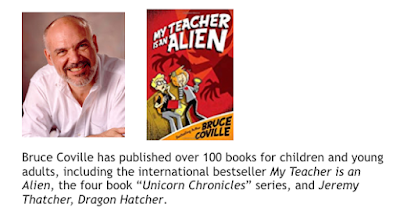
Mike Curato said: “Don't think of publishing as the be all end all of telling your story. That stunted me as a storyteller. You need to get it out. Even if you tell your story to just one person, that's important, make it count. Make this life count.”
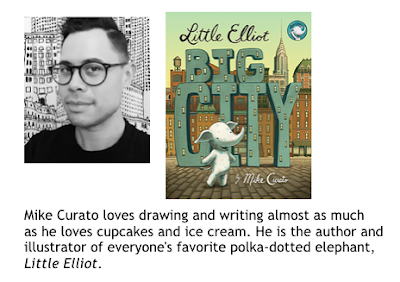
Coville continued: “Every creative action is a pebble making ripples that will spread out to places you can’t even imagine, and from there, those ripples will set other waves in motion, and on and on.”
So, to sum it up:
Children are worth our best efforts.
That’s why we do what we do – as crazy as it is most days.
To read more inspirational posts, see the SCBWI Conference blog here
________________________________________Natascha Biebow, MBE, Author, Editor and Mentor
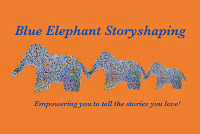 Natascha is the author of The Crayon Man (March 2019), Elephants Never Forget and Is This My Nose?, editor of numerous award-winning children’s books, and Co-Regional Advisor (Co-Chair) of SCBWI British Isles. She runs Blue Elephant Storyshaping, an editing, coaching and mentoring service aimed at empowering writers and illustrators to fine-tune their work pre-submission. Check out her Cook Up a Picture Book courses!
Natascha is the author of The Crayon Man (March 2019), Elephants Never Forget and Is This My Nose?, editor of numerous award-winning children’s books, and Co-Regional Advisor (Co-Chair) of SCBWI British Isles. She runs Blue Elephant Storyshaping, an editing, coaching and mentoring service aimed at empowering writers and illustrators to fine-tune their work pre-submission. Check out her Cook Up a Picture Book courses!
Published on September 09, 2018 20:00



